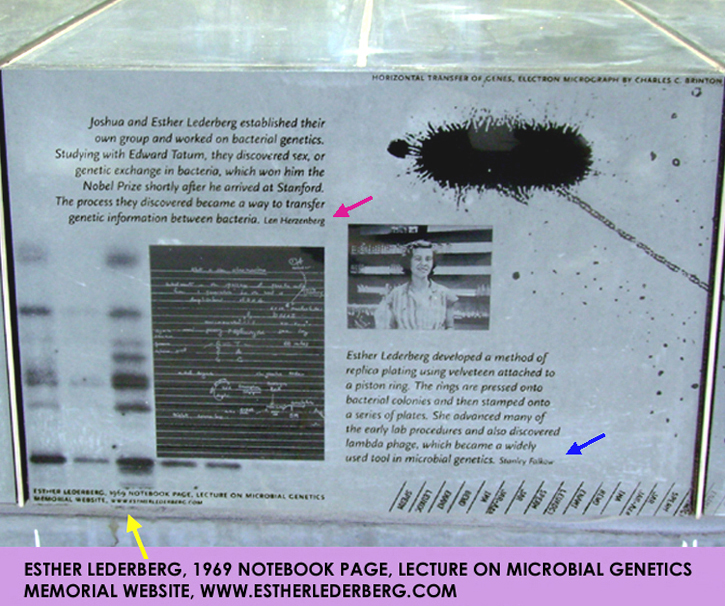Esther M. Zimmer Lederberg
Stanford University Memorial at Clark Walk

Joshua and Esther Lederberg established their own group
and worked on bacterial genetics. Studying with Edward
Tatum, they discovered sex, or genetic exchange in bacteria,
which won him the Nobel Prize shortly after he arrived at
Stanford. The process they developed became a way to transfer
genetic information between bacteria. Len Herzenberg
Esther Lederberg developed a method of replica plating using velveteen
attached to a piston ring. The rings are pressed onto bacterial colonies
and then stamped onto a series of plates. She advanced many of the
early lab procedures and also discovered lambda phage, which became a
widely used tool in microbial genetics. Stanley Falkow
The memorial to Esther Lederberg above points out some of Esther's
major accomplishments. However, other major accomplishments have
been omitted, including the discovery and naming of the
Fertility Factor "F",
Esther's extensive research of
galactosemia
using lambda mutants, Esther's research of
maltophilia
, and research on specialized transduction
with M. Laurance Morse.
Back

